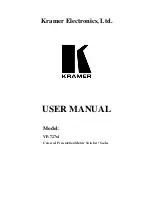
73
vpn-instance policy deny
Use
vpn-instance policy deny
to enter user role VPN instance policy view.
Use
undo vpn-instance policy deny
to restore the default user role VPN instance policy.
Syntax
vpn-instance policy deny
undo vpn-instance policy deny
Default
A user role has access to all VPN instances.
Views
User role view
Predefined user roles
network-admin
mdc-admin
Usage guidelines
To restrict the VPN instance access of a user role to only a set of VPN instances, perform the
following tasks:
1.
Use
vpn-instance policy deny
to enter user role VPN instance policy view.
2.
Use
permit vpn-instance
to specify accessible VPN instances.
NOTE:
The
vpn-instance policy deny
command denies the access of the user role to all VPN instances if
the
permit vpn-instance
command is not configured.
To configure a VPN instance, make sure the VPN instance is permitted by the user role VPN
instance policy in use. You can perform the following tasks on an accessible VPN instance:
•
Create, remove, or configure the VPN instance.
•
Enter the VPN instance view.
•
Specify the VPN instance in feature commands.
Any change to a user role VPN instance policy takes effect only on users who log in with the user role
after the change.
Examples
# Enter user role VPN instance policy view of
role1
, and deny the access of user role
role1
to all
VPN instances.
<Sysname> system-view
[Sysname] role name role1
[Sysname-role-role1] vpn-instance policy deny
[Sysname-role-role1-vpnpolicy] quit
# Enter user role VPN instance policy view of
role1
, and deny the access of user role
role1
to all
VPN instances except
vpn2
.
<Sysname> system-view
[Sysname] role name role1
[Sysname-role-role1] vpn-instance policy deny
[Sysname-role-role1-vpnpolicy] permit vpn-instance vpn2
















































